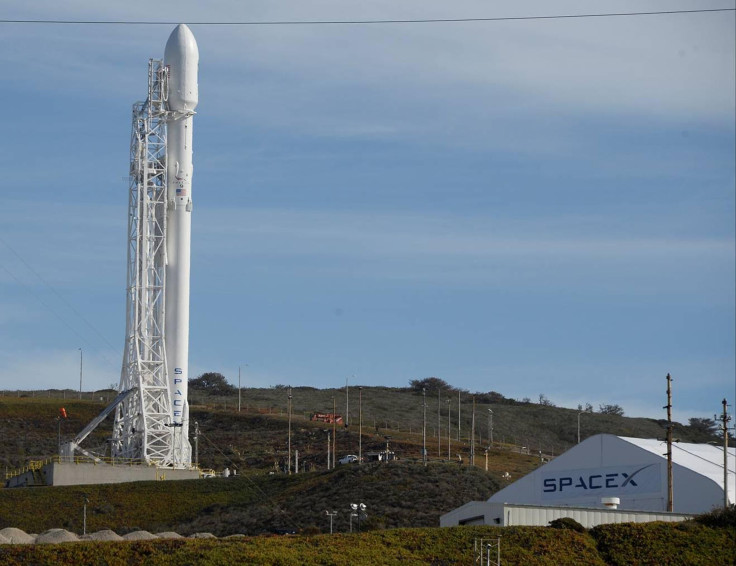SpaceX Falcon 9 Launch Live Stream: Elon Musk’s Spaceflight Company To Resume Rocket Launches Months After September Blast

SpaceX will launch a Falcon 9 rocket carrying 10 satellites to low-Earth orbit for the communications company Iridium on Saturday. This will be the company’s first launch since Sept. 1, when an explosion destroyed one of its Falcon 9 rockets and a $200 million AMOS-6 communications satellite it was carrying.
The launch window opens at 9:54 a.m. PST or 5:54 p.m. UTC. The satellites will begin deployment approximately an hour after being launched from the Vandenberg Air Force Base in California.
Tracking ground wind for tomorrow's launch attempt of 10 @IridiumComm NEXT satellites. Weather overall 60% favorable https://t.co/tdni53IviI pic.twitter.com/I9Vx26iRKW
— SpaceX (@SpaceX) January 13, 2017
“The 10 satellites are the first of at least 70 satellites that SpaceX will be launching for Iridium’s next generation global satellite constellation, Iridium NEXT,” the private spaceflight company said in a statement. “Iridium's primary launch campaign consists of seven SpaceX Falcon 9 launches, deploying ten Iridium NEXT satellites at a time. These 70 Iridium NEXT satellites are scheduled to be deployed by early 2018.”
The launch, originally scheduled to take place on Jan. 8, had been pushed back to Jan. 9, and was then rescheduled to Jan. 14 due to a forecast of heavy winds and rains at the Vandenberg Air Force Base.
On Friday, SpaceX said that weather conditions at the launch site were 60 percent favorable. If the company can’t carry out the launch on Saturday, a backup window would open at 9:49 a.m. PST or 5:49 p.m. UTC on Sunday.
The launch can be watched live via the video embedded below, or by clicking on this link.
The launch will end a four-and-a-half month gap in SpaceX’s satellite launch operations. Earlier this month, after an in-depth Federal Aviation Administration (FAA)-monitored investigation, SpaceX announced it had pinpointed the cause of the Sept.1 mishap. Its investigation revealed “buckles” in the inner liner of one of the composite overwrapped pressure vessels (COPVs), which are used to store liquid helium.
“Although buckles were not shown to burst a COPV on their own, investigators concluded that super chilled liquid oxygen can pool in these buckles under the overwrap. When pressurized, oxygen pooled in this buckle can become trapped; in turn, breaking fibers or friction can ignite the oxygen in the overwrap, causing the COPV to fail,” SpaceX explained in an anomaly update. “In addition, investigators determined that the loading temperature of the helium was cold enough to create solid oxygen, which exacerbates the possibility of oxygen becoming trapped as well as the likelihood of friction ignition.”
In order to prevent such catastrophic COPV failure, the company plans to — in the short-term — change the way it loads helium, and, in the long term, implement design changes to the COPV to stop it from buckling.
© Copyright IBTimes 2025. All rights reserved.




















